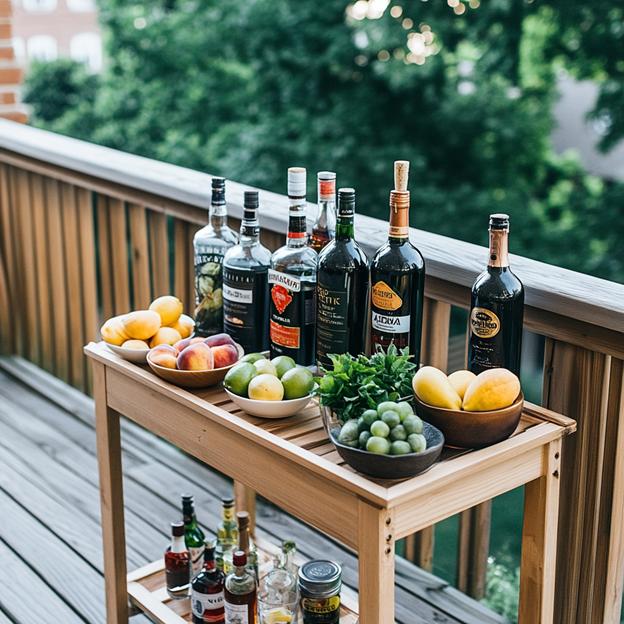Read on to learn all about the history of wine, from ancient times, to the more recent past, and today.
Fancy dinners, music videos, brunch, birthdays, New Year’s, even social distancing nights and most every other celebratory event calls for a special bottle of something. When it comes to wine, red, white, or bubbly shows up just about everywhere in our lives in one form or another.
It would be pretty easy to make the case that wine is one of the culturally richest and ubiquitous beverages known to man. The history of wine and man are meticulously intertwined, and it goes back way before we even started recording history.
As thankful as we are that someone somewhere stumbled upon prehistoric fermented grape juice, we also have to admit that it was bound to happen at some point. Unlike other fermented beverages that were serendipitous occurrences, the invention of wine was bound to happen. Most of us have probably left a plate of grapes out a little too long. As the sugars in the fruit begin to interact with the yeast in the air, the fruit begins to rot and break down. This process is called fermentation, and an important by-product of the process is ethanol, the alcohol we all know and love.
If falling asleep on the couch before you finish your plate of grapes is enough to produce the beginning of alcohol, it would be easy to see how the same thing has been happening for thousands of years. Archeological evidence points to ancient wine having had existed over 8,000 years ago in the modern-day country of Georgia. As time passed, technological and scientific advancements took this spontaneous fermentation to an exact and controlled rot and brought the beverage to the rest of the world.
From mythology to archeology and finally, to modern wineries, this is the complete history of wine:
The History of Wine before Time
Like we said, fermentation is not difficult to stumble upon. Because of this, we still can’t be completely sure how far back wine dates, even with modern archaeological theory. One prominent hypothesis, however, is that early humans climbed trees to taste and enjoy hanging berries. But just like we don’t snack on one single chip at a time—instead, we get ourselves a bowl—in the same way, these early humans quickly began to pick lots of berries at a time to store them in containers. As the berries began to break down, the juice at the bottom of the container would effectively become wine—not a very high alcohol content, but alcoholic nonetheless. Once early humans transitioned from nomadic lifestyles to more sedentary ones, the process of fermentation went from spontaneous domesticated.

The conditions for this ancient, spontaneous wine fermentation were set circa 11,000 BC. In modern-day Georgia, Armenia, Azerbaijan, Turkey, Iran, and the Levant, certain wild grapes were particularly common. Once pottery was developed later, grape storage (and, thus, accidental fermentation) became more feasible.
This history is mostly speculative, however. Hard archaeological evidence for the first real hints of wine shows up a few thousand years later.
Archaeological evidence of wine is found as early as 7000 BC in China, 6000 BC in Georgia, 5000 BC in Iran, 4500 BC in Greece, and 4000 BC in Sicily. Circa 4100 BC, evidence of wine fermentation in Armenia is especially notable, as this is the earliest found evidence of steady wine production. Jars recovered from this era show evidence of a sealant used to better preserve the wine, indicating not only intentional production but also the means of producing sufficient enough quantities to need storage.
In fact, this evidence of steady wine production is coupled with the discovery of the earliest-known winery in the “Areni-1” cave in Armenia. This ancient winery contained a wine press, jars, cups, and fermentation vats. Truly, this wasn’t only intentional fermentation, it was well-developed and advanced technology. In fact, the technology was too well developed to be the first of its kind; the origin of any technology of this kind has to date back even further. Wine production this advanced was unique to this region at the time, however. Persian wine is famously documented through carvings of wine being offered to the Persian king as a gift—clearly, Armenian wine was both well-made and highly valued. Comparable production wouldn’t arrive elsewhere until nearly a millennium later in Egypt.
Wine Consumption Grows in Popularity
Moving forward to Egypt circa 3000 BC, we begin to see more evidence of wine consumption. We know from depictions found in Egyptian tombs that wine played a big role in ancient Egyptian culture, especially during ceremonies. Cultivation and domestication of grapes through trade paved the path for more regular production. Many of the depicted traditions and ceremonies relate wine to symbolically representing blood, which, of course, indicates that wine in ancient Egypt was mostly red.
That link to blood also came with plenty of superstition, according to other archeological evidence. Unlike with Persian kings, the wine wasn’t originally offered to the gods, nor was it consumed by pharaohs. The red-colored wine was believed to be the blood of those fallen after fighting the gods. After falling and becoming one with the earth, it was believed that vines came up from this soil and yielded this wine. The Egyptians believed that this was the reason why consuming wine drove you crazy—a very different interpretation of inebriation. It wasn’t until Psammetichus I that pharaohs began to consume wine (and began supporting the idea that wine was considered a worthy offering to the gods).
From there, the spread of both grapes and winemaking knowledge and culture was largely thanks to the Phoenicians. It was there that wine made its way to some of the most famous ancient wine cultures: ancient Greece and the Roman Empire. In fact, especially in Greece, many of the practices and traditions in ancient winemaking are preserved to this day. Modern grapes used for winemaking in Greece are similar—if not identical—to those used in ancient practices, and the resulting wines are thought to be similar as well. The inclusion of wine in Greek mythology through the god Dionysus is a strong indication that wine production was deeply rooted in Greek culture.
Similarly, in Rome wine was hugely valued. It formed an integral part of the Roman diet, and it was here that wine production truly became a business. As production and consumption both increased, so did drunkenness and alcoholism. During the two centuries of the Common Era, the Roman Empire began to see a rise in both of these consequences of drinking. Wine culture grew so much that regulations had to be put in place, limiting the number of vineyards allowed to exist throughout modern-day Italy. Wine production technology nevertheless advanced tremendously during the Roman Empire. Everything from advanced aging techniques to wine presses came out of this era. The oldest surviving unopened wine bottle actually comes from the Roman Empire.
Somewhere in Between
In Medieval Europe, wine consumption became much more common and widespread, especially wherever grapes could be easily cultivated. In the north and in the south where grape cultivation wasn’t as feasible, beer was the beverage of choice across social classes. Catholic Mass, however, made wine a necessity in all regions, and to make sure that supply was accounted for monks became one of the largest producers of wine throughout the region. This helped establish the sustainability of wine production and also brought about some innovations, such as the first planting and production of Riesling, the trademark German grape. Wine production by monks would spread into an industry spanning all of Europe, establishing traditions still followed today.
During this period, wine became a normal household commodity. Households poured wine for every meal and had assorted selections of both reds and whites. To some extent, this was the birth and normalization of early wine caves.

Modern Wine
We haven’t even mentioned Napa Valley or Argentina, two major regions in the contemporary wine culture. That’s because wine production in the Americas didn’t come around until Spanish conquistadors landed in modern-day Mexico. Spanish Catholic Holy Eucharist made it necessary for these Spanish travelers to bring European grapes from overseas and begin to cultivate them in Mexico. Subsequent European immigrants would also come to bring over their respective grape varieties from France, Germany, and Italy. This would help spread wine production and culture throughout the Americas, eventually blossoming into the culture we know today.
Back in Europe, a blight of phylloxera devastated European vines around the same time. It was found that the vines native to the Americas were resistant, and French-American hybrids were produced to resist this blight. This practice is continued to this day and has helped bolster wine production technology for resilience.
From there, wine culture has developed and crafted new styles and identities, playing off new and old-world practices. Argentina’s famous Malbec and Chile’s Carmenere both originated in France. California’s Zinfandel originated in Croatia and Italy. All of these have come to rival the wines from the original countries and sometimes even surpass them in lauded quality.
There is now a wide variety of styles of wine that stem from all parts of the world. It sometimes seems pretty crazy that an accidental berry fermentation eventually evolved into this massive and impressive selection of carefully crafted wines. Each can be paired with specific and very different flavor palates, occasions, and plates. Certainly, not everyone is well versed in this culture of pairing, and starting to explore it can feel daunting. Luckily, we have a guide for that. Don’t be afraid to dive in and explore a little bit! It is, after all, human culture.









